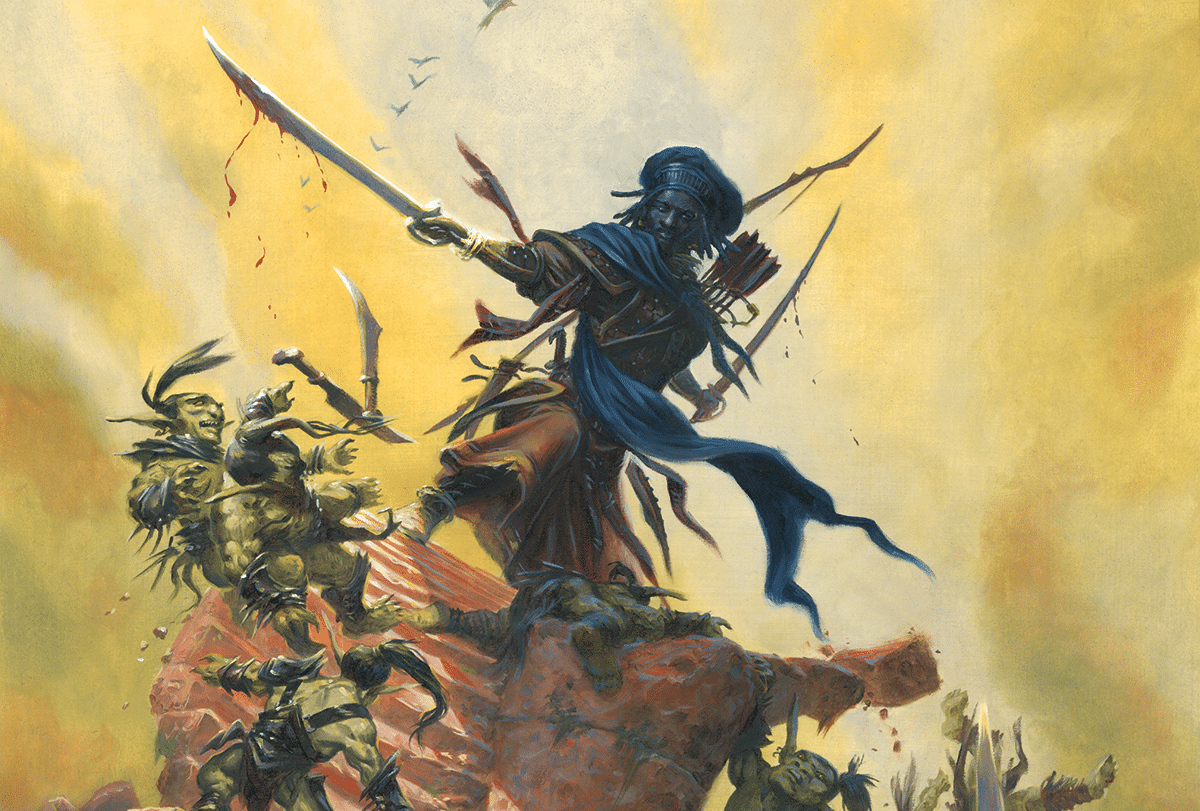Without any preamble or fanfare, a brand-new toolkit was rolled out (in its Alpha state, but still!) on D&D Beyond a few days ago! The platform, which up until now has supported rules and characters, has been changed so that it also includes support for maps and tokens – and thereby effectively works as a proper VTT platform.
Everyone who has played the game online will quickly realise why this is huge news. While D&D Beyond has been a sophisticated utility for managing the characters and information that are featured in a DM’s campaigns, it’s been more lacking in ways to run the actual sessions, as there are limited ways to share images or otherwise handle the great number of tasks that a DM juggles. The recent changes make a dramatic difference, especially as the inclusion of maps often forms the basis for hostile encounters or other challenges that require checks and strategic movement, which in turn make up much of a typical adventure.
Let’s take a closer look at what’s been released, and in what ways the tool is expected to evolve over time!

D&D Beyond Map support
With the addition of map support, DMs who use D&D Beyond can now invite their players to join the game in a browser-based session, in which maps can be shared and manipulated in real time. The maps are stored on D&D Beyond (all the official ones will be there), and the DM can also upload their own maps, just as it’s possible to store other homebrew content. This means that it will be possible to play D&D the regular VTT way, just as players have been able to do for many years using tools such as Foundry, Fantasy Grounds or Roll 20.
The tool is already available to anyone with a Master subscription at D&D Beyond, but the players in a campaign don’t have to be subscribers as a free account is sufficient to take part in the session.
On September 19, Wizards of the Coast released a video on Dungeons & Dragon’s YouTube channel in which one of the heads of D&D Beyond explained how the changes were the beginning of a major overhaul of the platform and its toolkit. She added that before the newly released tools, the development had primarily been done with players in mind, but going forward this would change so that DMs would be supported by new features.
This move was quite unexpected – at least by me – as there’s been a lot of talk about and demonstrations of the upcoming 3D-based tool that’s been in the works over at Wizards of the Coast for a long time. I expected the makers of Dungeons & Dragons to skip all kinds of standard VTT support and dedicate all effort to their 3D tool, but clearly, I was mistaken!
Let’s dig into the specifics and the plans
First of all, the new VTT tool will let DMs import all maps from the official adventures and the tokens associated with each adventure, and use these to share with their players. Right now, the toll features maps from only a limited number of adventures, but that’s expected to change once the system is more developed. At present, maps from the following modules can be found in the tool:
- Bigby Presents: Glory of the Giants
- Dragons of Stormwreck Isle
- Giants of the Star Forge
- Keys from the Golden Vault
- Phandelver and Below: The Shattered Obelisk
DMs can also create their own maps or tokens, and mix these up as they please. That alone is neat, as it’s a whole new facet of D&D Beyond and critically important for running combats on the maps.
But there’s more: even though we’re only looking at an Alpha version, it comes with the all-important fog of war – in short, a way to dynamically reveal areas on a map that the character must discover by moving into the correct position or use other means (such as magic spells or special abilities) to discern. In addition, there’s a log that helps the DM keep track of everything that’s going on during the sessions, and one can go back to this to check any dice roll, including those made by the players’ characters. Also, while mobile support isn’t going to happen in a good while, the plan is to get there eventually.
Moreover, the tool includes a facility for managing safety concerns and feedback from users – a good way to make sure the system isn’t misused but keeps progressing in a direction desired by the players and the DMs. For example, if someone uploads an image that’s inappropriate or offensive, this can be reported right away. Likewise, if a user comes across a bug or something plain weird, they can communicate their discovery immediately to the development team. Those who are in charge of the tool can expect to receive a torrent of messages, but if everything is handled efficiently, the feedback should result in quick action and good upcoming versions.
How this tool is received by the tabletop roleplaying community
What remains to be seen is how this tool is received by the tabletop roleplaying community. There is already a range of similar tools on the market, some of which are completely free or very refined, so it might take a lot to make players abandon their current subscriptions or favourite tools and turn to D&D Beyond’s new offering instead. However, D&D Beyond has a strong advantage in that they’re used by a huge number of players who keep their characters on the system – so it’s possible that the close links between these two will attract many users to at least try the new system. The notion that a player could have their bespoke tokens available alongside a specific character, and easily add it to a map and move around as needed, is definitely an appealing one. Similarly, a DM could have all their content, official and otherwise, at hand during a session and swiftly look things up or change maps as needed without having to switch between screens or systems.
Unsurprisingly, the community has already responded in a variety of ways, and there’s a sizable number of questions that have been raised about the system and what it offers (and what it doesn’t offer, too). What’s more, quite a few worry that the promised work on this tool means that other things in Wizards of the Coast’s pipeline will be delayed or altogether jettisoned.
For example, some have required the inclusion of generic icons that can be named and thereby represent custom creatures or objects, the inclusion of tools for measuring distances on the maps (which would be handy for speeding up decisions and avoiding erroneous actions or movement), and there are those who wonder exactly how it’ll work for groups in which the role of the DM changes from session to session.
Other requests concern the possibility of limiting the number of sources (in other words, official modules) that are available to players, a problem that has been flagged by users for some time. And that’s not to mention long-awaited fixes such as updates to Hoard of the Dragon Queen, various errata, and the general speed of the website.
Numerous comments have already been made on the Alpha version too, such as its lack of support for doors and windows, a preview mode so that the DM can tell what the players will see before the fog of war is removed, missing features for conditions (blinded, paralyzed, stunned and so on). Still, with the tool being in Alpha, it’s very early days, and it’s to be expected that Wizards of the Coast will work hard to keep up with the mounting competition in the VTT landscape. Hordes of players turned to online gaming during the pandemic and made friends with people scattered all across the world, so I would expect the need for such virtual tabletop platforms to remain high for the foreseeable future!






